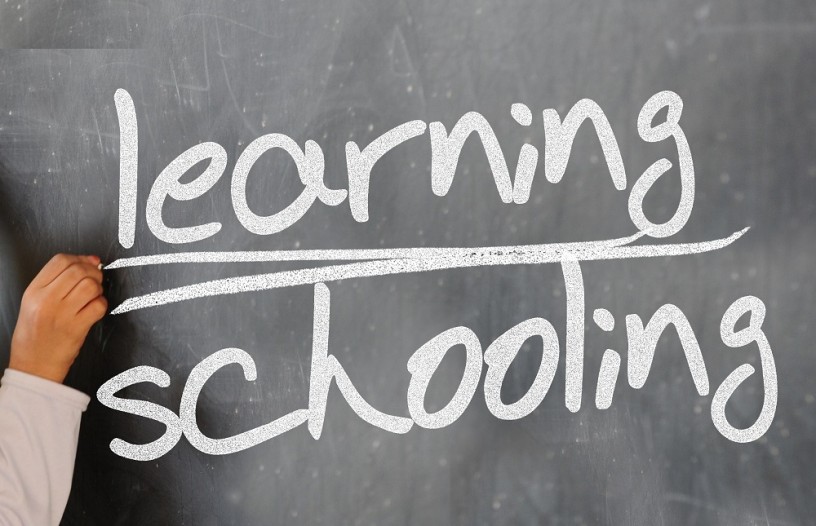In his 1999 work Thinking Styles, psychologist Robert Sternberg (now Professor of Human Development at Cornell University) asserts that styles of thinking and learning are as important to intellectual development as innate ability – and that if educators ignore the importance of individual learning styles, they are jeopardising their students’ chances for success.
In basic terms, ‘learning style’ denotes the way a student collates, interprets, sifts through, and organises information in order to draw conclusions from it. Scientists and psychologists have developed over 70 recognised learning style schemes. One of the most popular, the VARK model, was pioneered by innovative educator Neil Fleming in 1987 – and it is still used widely today.
What is the VARK Model?
VARK stands for Visual, Aural, Reading/Writing, Kinaesthetic – four styles of learning Neil Fleming felt most learners could be categorised into (though Fleming notes that many learners respond to more than one style).
Whilst – as mentioned above – there are many different theories concerning learning styles, an understanding of the VARK model, among others, will prove valuable when communicating with a diverse audience – whether that is in an enterprise education classroom or via your crowdfunding campaign. With this in mind, our overview of the four styles describes not only how these types of learners understand and interpret data, but also how you might engage them:
Visual
A familiar but widely misunderstood learning style. Often perceived as a tendency to respond best to pictures or videos, visual learners in fact process information most effectively through the use of graphical tools – such as flow diagrams or graphs – that allow them to interpret data in a rational fashion. Students with this learning style view data as pieces of a puzzle, and tend to organise their notes in a highly-cogent manner – thus allowing them to visualise connections between strands of information.
Engagement tactics: Make sure that information is presented in a highly visual – but logical – way, utilising charts and graphics and clearly signposting the relationships between the various points you are making.
Aural
Students with this style prefer an emphasised use of speech and hearing throughout the learning process. They would prefer the use of auditory material, lectures, and class discussion; when alone, they may read aloud to themselves or seek out online communications that provide auditory stimuli. These kinds of learners respond best when messages are delivered in an audio format, and when they are encouraged to take notes of what they’ve learned, rewording in an individual way that makes it easy for them to recite aloud and absorb.
Engagement tactics: Make it easy for auditory learners to repeat the information you’ve presented out loud; this will help them to remember it. Including question-and-answer sessions wherever possible and encourage structured debate around key topics. Such tactics can be incorporated into marketing campaigns, too; Jon Loomer (a prolific blogger and marketing expert) provides audio versions of his written blogs.
Reading/Writing
The modern educational system was founded on the reading/writing style, and as such it tends not to be discussed within a critical setting. It is simply assumed that students must master this style in order to succeed at school or university. However, reading/writing is not only a crucial component of education, but also represents a specific learning style. Individuals that respond to this style of learning prefer to write out materials, and to read, read again, and re-read once more. Materials are absorbed most readily when organised in a structured form (such as in a list).
Engagement tactics: Make it easy for reading/writing learners to read along with you; if you’re giving a speech or presentation in a classroom, provide annotated handouts so that these learners will engage. Regular written quizzes are also recommended.
Kinaesthetic
Kinaesthetic translates to tactile forms of learning – the ‘practice makes perfect’ approach to education. Kinaesthetic learners respond best to activities that require them to perform tasks in an active way. This doesn’t necessarily mean that physical activity is required; students with a kinaesthetic bent learn effectively when working through practice problems (as opposed to reading a textbook) or when applying academic concepts to real-life problems (such as algebra in a business scenario).
Engagement tactics: The introduction of role-playing scenarios, exercises that require students to get up and move around, or mental problems that involve real-life environments are a great way to stimulate kinaesthetic learners.
If you are an enterprise educator looking for innovative ways of engaging your students, we would be delighted to help. Our live crowdfunding marketplace and Sandpit simulation are interactive, multifaceted platforms that encourage creative problem-solving whilst catering to – and stimulating – different types of learning. Contact us today to book a free demonstration.





Leave a Reply